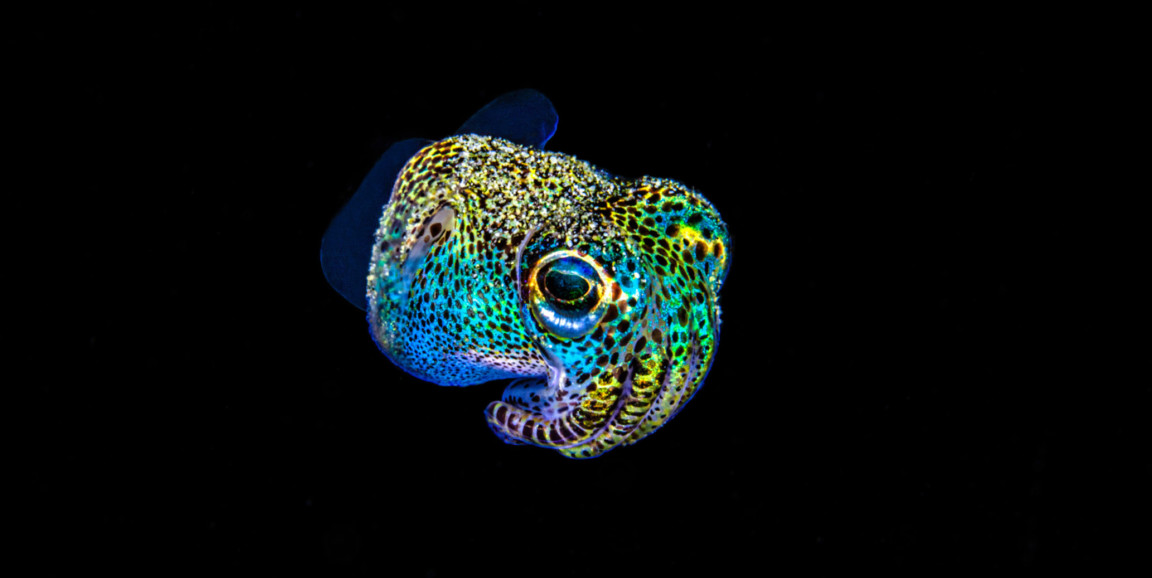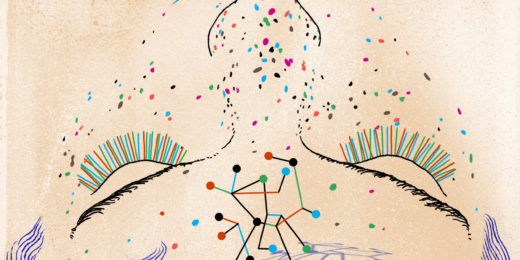If you ask me, there's nothing quite so weird and wonderful as a cuttlefish. Or a squid. Or an octopus. Basically, the whole cephalopod gang. Maybe it's their gangly, elegant appendages, or their sleek, streamlined bodies gliding through the water, or perhaps their impressive ability to change color, matching the hues around them.
To Matt McCoy, a postdoctoral researcher in the lab of Nobel laureate Andrew Fire, PhD, one among them stands out: the bobtail squid. Squishy and the size of a thimble, these little marine creatures are as cute as they come. But they're more than just lovable sea blobs. Their nervous systems may harbor clues to some fundamental truths about the evolution of intelligence.
Rachel Grant, a former Stanford Medicine developmental biology graduate student, spoke to McCoy, an Interdisciplinary Postdoctoral Scholar who is investigating genes that underpin nervous system evolution to learn more about bobtail squids and how they might inform our understanding of human diseases.
This Q&A was originally published by the Wu Tsai Neurosciences Institute and has been lightly edited for Scope.
You study a cephalopod called the bobtail squid. Why?
People call cephalopods aliens, because they're so bizarre, compared to mammals. What's cool about them is that they're not alien -- our ancestors evolved in the same environments, under many of the same conditions.
We shared a common ancestor with cephalopods that dates back 600 million to 800 million years. Independently, we evolved enormous genomes and highly complex nervous systems. If you compare the size of genes in bobtail squid genomes, you'll see they are much larger than those of closer relatives with less complex nervous systems. I hypothesize that these phenomena are connected: Large genes, which are composed of huge numbers of DNA base pairs, contribute to nervous system complexity. I study squid because they harbor such genes and my goal is to try to understand the fundamental aspects of nervous system evolution.
What are large genes and why are they interesting?
As a graduate student, I noticed that the largest genes in the genome were active in cells I had reprogrammed into neurons, and I used that as a tool to identify the genes. But then I started thinking about it as more than just a tool: What if this says something fundamental about neurons? As a postdoc, I hope to focus on the causes -- how did these genes become so big -- and the consequences -- what do these genes teach us about neurons?
Many large genes allow neurons to recognize each other and form specific connections. We think that bigger genes, whose products can become shuffled and combined in unique ways, may help produce many distinct neuronal proteins and allow more specific neural connections to form.
Does your research have a translational component in addition to the basic biology?
Large genes are exposed to more mutations, opening new chances for pathologies. There's evidence that many neurological disorders have a gene size component. For example, in Alzheimer's and other neurodegenerative diseases, we see a misregulation of large genes. This may be a sign of something else that's pathologic, or it may be causing the disease itself. We don't know yet.
My time as a postdoc and working with the bobtail squid has given me an opportunity to dive deeply into the basic biology of gene size. That's helped point to potential paths to study, and the hope is to one day find possible treatments for these neural diseases.
Photo by Марrарhта Tрановскаr






